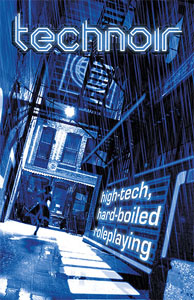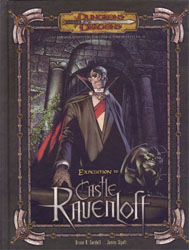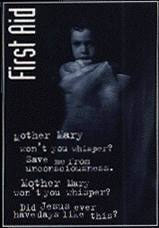In a comment on my very old review of Fading Suns, Potato asked me to provide a rundown of how I put together my system cheat sheets for RPGs: “It sounds like a good way to get a grasp of the rules when learning/trying out a new system.”
He’s absolutely right about that. And the cheat sheets themselves, of course, also make great references at the table for both you and the players.
BULLET POINTS
My goal is to make the system cheat sheet comprehensive. That means including all the rules. Often I see cheat sheets that just cover the basic stuff that’s used all the time. But that’s actually the stuff I’m least likely to need cheat sheets for because it’s quickly memorized through repetition.
 Obviously, this requires that I both cut down the amount of space the rules take up and the amount of time it takes to read and understand those rules. The quickest way to accomplish this, in my experience, is through the use of concise bullet points.
Obviously, this requires that I both cut down the amount of space the rules take up and the amount of time it takes to read and understand those rules. The quickest way to accomplish this, in my experience, is through the use of concise bullet points.
For example, here’s a chunk of rules text from the second edition of Heavy Gear:
The Silhouette system uses everyday six-sided dice to add a random element to the game. These are sometimes referred to as “1d6” in the rules, “2d6” for two dice, 3d6 for three, and so on. The same die rolling convention is used for both the roleplaying and wargaming aspects of the rules, so this is not repeated in the respective rule sections.
When two or more dice are rolled simultaneously, their results are not added together. Instead, the highest result is considered to be the outcome of the die roll. If more than one “6” is rolled, each extra “6” adds one (1) to the total. If every die rolled turns up “1”, the die roll is a Fumble and counts as an overall result of zero and no modifiers may change this value. Unless specifically mentioned otherwise, all die rolls work this way.
The totals of die rolls are often influenced by modifiers. Modifiers are added to the total of a die roll. If negative modifiers lower the total below zero, the final result is always zero and cannot go any lower. Modifiers are not applied to Fumbles.
A Fumble is a mistake or mishap that cause the failure of the action attempted. It is not necessarily caused by an error or the incompetence of the character, and may well be the result of environmental factors. No matter what caused the Fumble, however, the total die roll is always zero.
In the tactical game, Fumbles produce clear results. This is hardly the case in the roleplaying rules due to the mind-boggling number of possible actions and outcomes. The effects of each separate roleplaying Fumble must thus be described by the Gamemaster. In general, the harder the task attempted, the greater the effect of the Fumble.
This is then followed by an equally lengthy section listing various examples. Using bullet points, all of this is simplified on my cheat sheet down to the major points:
- Roll Xd6: Result = highest die +/- modifiers. (Cannot be < 0.)
- Additional Sixes: Each additional 6 = +1 to total.
- Fumble: If all dice = 1, result = 0 (no modifiers).
Short and sweet. Using the same technique, I’m able to squeeze the next three pages of rules into a quarter page of my cheat sheet.
DON’T INCLUDE OPTION CHUNKS
The exception to my “include everything” methodology are what I used to refer to as the “character option chunks” in the system: Feats. Disadvantages. Spells. Powers. Weapons. That sort of thing. Any small packets of specialized mechanics that are only invoked if the character has selected that packet.
These days I think of it as invoking the “power card principle”. It’s not that having a quick reference for these rule chunks isn’t useful. It’s just that it’s more useful for those chunks to be included on individual character sheets, character-specific cheat sheets, or reference cards.
To boil that down: If everybody (or nearly everybody) uses a rule, it goes on the system cheat sheet. If not, put it on the character’s sheet or in the NPC’s stat block.
REMOVE CLARIFICATION AND ADVICE
Well-written rulebooks include a lot of clarification and advice. This is good: It helps you to both learn and implement the rules effectively.
 But when you’re prepping your cheat sheets, you want to jettison all of that. For example, here’s a chunk of text from Technoir:
But when you’re prepping your cheat sheets, you want to jettison all of that. For example, here’s a chunk of text from Technoir:
Adjectives are open to interpretation. They are part of a language we use in the game to collaboratively tell stories. Adjectives have a couple of designations to help us agree on how they affect our characters.
Adjectives can be applied to a character directly — representing her physical or psychological state — or to an object belonging to a character — representing its physical condition or the state of its electronics and software.
Adjectives can be positive or negative. These determine how the adjective affects the dice you roll. This process is explained in the “Rolling Dice” section starting on page 92.
A positive adjective can help the character who has it. They allow you to add Push dice to your roll. They are written in the positive column of adjectives on the protagonist sheet or stat block.
A negative adjective usually hinders the character who has it. They force you to add Hurt dice to you roll. They are written in the negative column of adjectives on the protagonist sheet or stat block. Sometimes they may only apply to a part of the body — like a broken arm or a shattered kneecap. In these cases, write the body part in parenthesis next to the adjective. Sometimes they apply to an object the character has. In these cases, draw a line from the adjective to the object.
This is all good stuff. But on my cheat sheet, it boils down to:
- Hurt Dice = negative adjectives
- Push Dice = can be discharged for each adjective, object, or tag
Where to draw the line of inclusion/exclusion can occasionally get a little blurry. For example, in my Heavy Gear cheat sheets I didn’t include the table of Typical Thresholds (3 = Easy, 6 = Difficult, etc.) because I felt like it was a useful guideline that I didn’t necessarily need to reference during play. You might feel differently.
REORGANIZING
The last thing I do when putting together a system cheat sheet is to avail myself of the opportunity to reorganize the rules.
The truth is most RPG manuals suck when it comes to organization. Related rules will end up smeared across a half dozen different chapters, forcing you to flip madly back and forth while trying to adjudicate situations at the game table. This sucks, so take this opportunity to group material together in a way that makes sense when running the game. (And, as much as possible, try to keep all the relevant rules on a single page or two so that you can look at the totality of them simultaneously.)
Unfortunately, there are no hard-and-fast rules for this sort of thing. It’s more an art than a science, and it’s mostly a matter of common sense.
REVISE
After playing a session or two, revisit your cheat sheet: Was there stuff you missed? Stuff that could be phrased better? Stuff that should be cut? Stuff that should be moved around?
Do it. Print a new copy. Repeat until you’ve refined your cheat sheet into a lean, mean running machine.
EXAMPLES
As a couple of examples, click through for the RTF cheat sheets I put together for the first edition of Fading Suns (more than a decade ago) and Technoir (a couple weeks ago). For the latter, however, you might want to also grab the official (free) Player’s Guide, which I discovered actually does a really fantastic job of cheat sheeting the system.


















